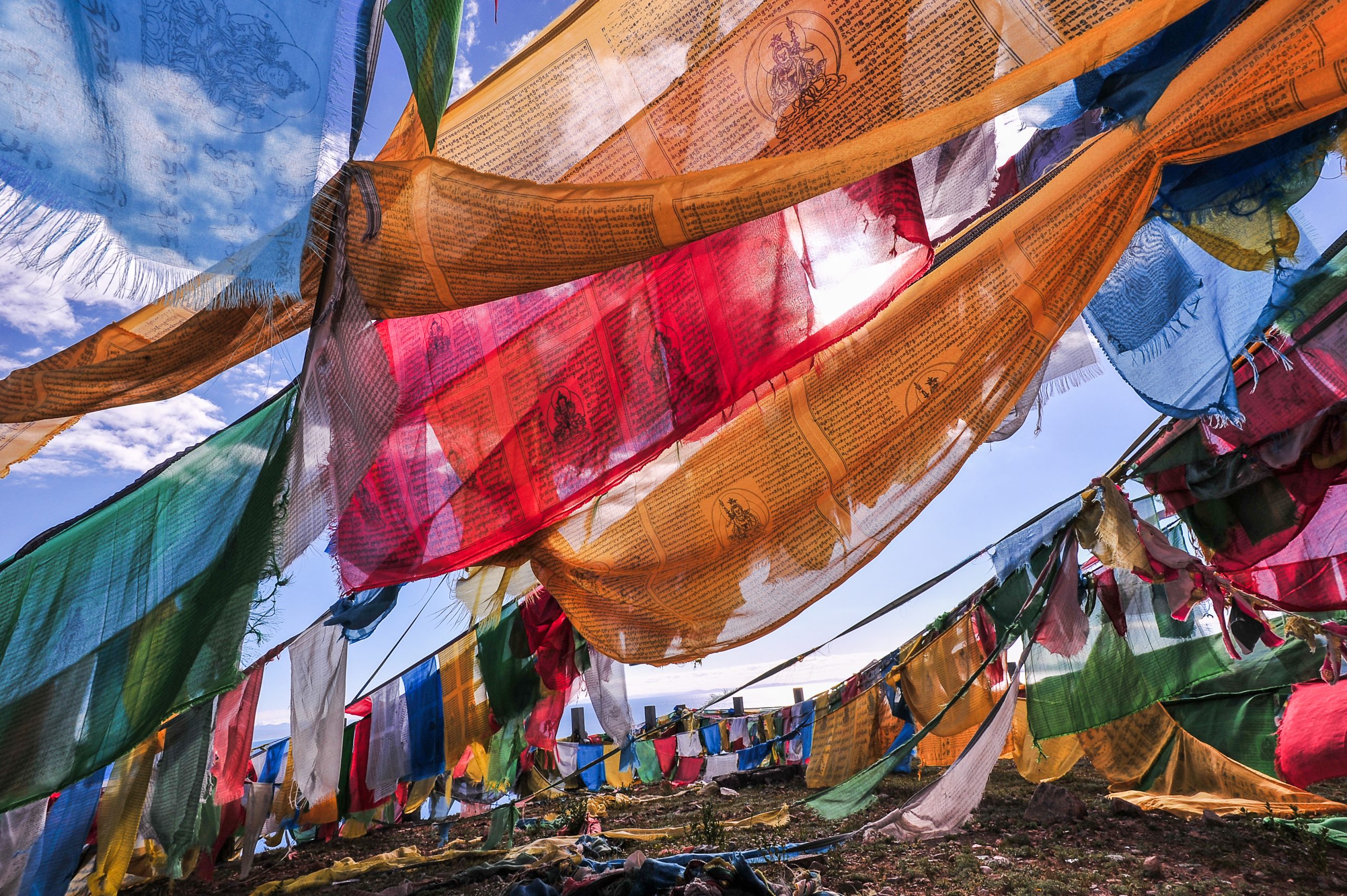53 East Asia: Regional Example – Tibet
At times, Tibet, or even all of western China, has been considered to be part of Central Asia. The argument is that mountainous Tibet and the arid Taklamakan Desert match the mountainous and desert pattern of physical geography that is so common in Central Asia. In its human geography, Tibet and the Taklamakan Desert have very low population densities that also are similar to much of Central Asia. Finally, adding these regions to Central Asia allows Mongolia to be a contiguous piece of Central Asia. However, it is awkward to declare that part of one country is in one world region, while another part of the same country is in a different world region.
This is a point of interest in Regional Geography. In our textbook on Geography of the Western World, we do not divide Russia into Europe and Asia, but rather leave Russia as by far the largest piece of the Russian Domain. Similarly, in NAME we count Turkey in the Middle East without counting a tiny western corner of the country in Europe. (This will be easier if Turkey someday joins the European Union, then allowing us to count all of Turkey in Europe.) Nevertheless, in NAME and Sub-Saharan Africa, we acknowledge our happiness that Sudan divided itself into Sudan and South Sudan, thereby allowing us to put Sudan into NAME and South Sudan into Sub-Saharan Africa. Furthermore, we want to divide Mali and Chad in the same way.
Well, in this case we are keeping Tibet and the Taklamakan Desert in East Asia, but we note the appeal of placing these lands in Central Asia. When you read our introductory chapter on Central Asia, you will find other reasons for leaving Tibet out of Central Asia.
Tibet is both a historical area and an autonomous political region of China; however, these two versions of Tibet do not match. Tibet is known as “the roof of the world,” for it has the highest average elevation (14,000 feet) of any region on Earth. Although the Bon faith predates Buddhism there, in Tibet Buddhism dominates the region. However, communism in China has greatly restricted the outward practice of Buddhism in Tibet, reducing the number of monks and demanding renunciation of the Dalai Lama.

Photo by shinox Chen on Flickr.
Yes, commonly Tibet is known as “the Roof of the World” due to the high mountains throughout the region. Because Tibet mainly is in the rain shadow of the Himalayan Mountains, it receives relatively little precipitation. Nevertheless, there are a number of alpine lakes in the region, while snow melt also births several prominent rivers as water flows down the mountain slopes. With China’s two largest rivers – the Yangtze and the Yellow Rivers – as well as major rivers of South Asia – the Ganges and Brahmaputra Rivers – and Southeast Asia – the Mekong River. Tibet gains a second nickname as “the Water Tower of Asia.” Given the high elevations of Tibet, the region maintains a modest population, currently about six million people. As a remote and sparsely populated region with a distinctive religious approach and focus, Tibet might seem to be worthy of being left to its own; however, communist China has made Tibet a focal point of control, possession, and oppression.
Although there have been people living in Tibet for at least 21,000 years, the first unified Tibet started with the ruler Songtsen Gampo in 604 BCE. During his and the following kings’ reigns, Buddhism became the official state religion. With the ebb and flow of territorial gains and losses, eventually the Tibetan Empire gained its maximum size within the years 780-800, expanding into various primarily mountainous portions of what now is China, Kyrgyzstan, Tajikistan, Afghanistan, Nepal, Bhutan, and India.
After various fragmentations over a few centuries, Tibet was taken by the Chinese Qing Dynasty in 1720. The Qing ruled Tibet until in China the 1911 Xinhai Revolution deposed the emperor and ended the dynasty. In 1913 Tibet declared its independence with its religious leader of Tibetan Buddhism, the Dalai Lama, taking the reins as the political leader as well. This was Thubten Gyatso, the 13th Dalai Lama. He was followed by regents and then the 14th Dalai Lama, Tenzin Gyatso, who was born in 1935.
Winning the battle of Chamdo in 1951, the new communist China annexed Tibet. China claims Tibet not as territory gained from conquest, but as an integral part of China’s historical area. Tibet’s failed uprising in 1959 led to the abolishment of Tibet’s governance and to the flight and exile of the Dalai Lama. Under communism, Tibet suffered greatly during two key societal upheavals. The Great Leap Forward caused hundreds of thousands of deaths in Tibet, while the Cultural Revolution led to the destruction of 6000 monasteries and architectural structures. In 1965 within its territorial system, China established the Tibetan Autonomous Region with Lhasa as its capital. The 2008 uprising in Tibet brought harsh reactions from Chinese authorities. Overall, probably 1.2 million Tibetans have died due to communist oppression, this being about a fifth of the region’s current population.
Did you know?
A few Christian missionaries are active in Tibet, ironically as the communist government wishes that an expansion of Christianity would correspondingly decrease what the government views as troublesome Buddhism.
A number of American actors have campaigned for a restoration of Tibetan independence and against Chinese treatment of Tibet. Amy Adams, Hugh Jackman, and especially Richard Gere are some of these activists.
Hot Off the Press
Chinese control over the Tibetan people extends to educational policies for Tibetan children. A new report from the New York Times tallies one million Tibetan children living away from parents in Chinese boarding schools. Sadly, this is yet another example of this type of oppression, as similar policies have taken place with Aboriginal children in Australia, Native American youths in the USA, First Nation children in Canada, and so on.
A detailed account of Chinese dominance and oppression over Tibet is provided in a new book by Chinese author Jianglin Li – “When the Iron Bird Flies: China’s Secret War in Tibet.”
My Turn!
CITED AND ADDITIONAL BIBLIOGRAPHY:
Chen, shinox. Tibet. Photo, 22 Aug. 2011. Flickr, https://www.flickr.com/photos/shinox/15214160484/. Attribution-NonCommercial-NoDerivs 2.0 Generic (CC BY-NC-ND 2.0).
LEARN A LITTLE ABOUT TIBET. https://www.umass.edu/rso/fretibet/education.html. Accessed 10 June 2022.
Lo, Gyal. “The One Million Tibetan Children in China’s Boarding Schools.” New York Times, 15 Sept. 2023, https://www.nytimes.com/2023/09/15/opinion/china-tibet-boarding-school.html.
The Legal Status of Tibet. https://www.culturalsurvival.org/publications/cultural-survival-quarterly/legal-status-tibet. Accessed 10 June 2022.


